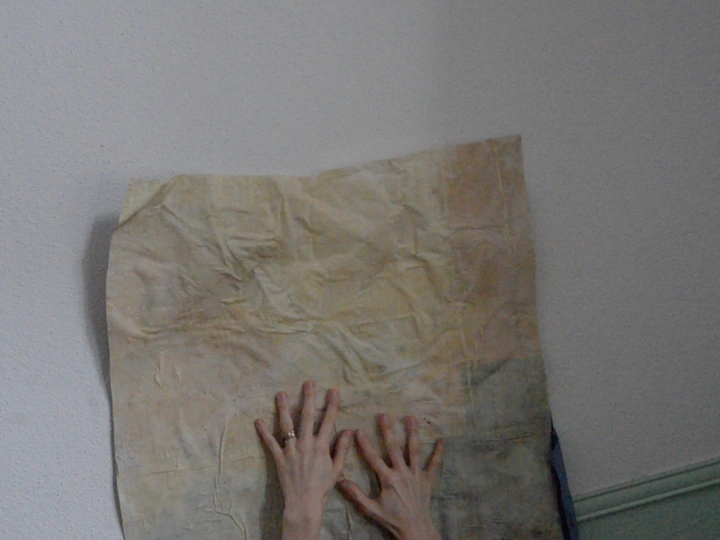‘Archaeology of the future’ - a scenography

My practice arises from a profound engagement with the materials that are usually overlooked or discarded. I am working with waste, remnants, industrial off-cuts, and used material, not as symbolic gestures or aesthetic raw matter, but as active agents of spatial and social storytelling.
Studying at the Technical University of Vienna, EPFL Lausanne, Bauhaus University Weimar, and the Estonian Academy of Arts in Tallinn informed my diverse background as a circular architect, artist, and material researcher.
Within my interdisciplinary practice I propose a way of thinking through material. My method is grounded in curiosity and responsibility: I do not claim to provide fast solutions, but instead cultivate a rigorous, site-specific, and process-based approach. Each of my engagements begins with attentive listening, to place, material, and collaborators. Through my work, I reconfigure waste not just as a problem to be solved but as a vocabulary to be relearned. In this way, my work creates a space where alternative futures are not only imagined but also materially rehearsed.
For my approach interweaving architecture, artistic research, and material ecologies, I was awarded the ‘Bauhaus Graduation Stipend’ as well as the ‘Startstipendium’ from the Austrian Federal Ministry for emerging architects. This gave me the possibility to further pursue my approach exploring full-scale scenographies to give form to invisible material streams, opening up spaces of imagination and testing low-tech reuse modes.
Alongside a recent field-based research and spatial investigations in Accra, Ghana, where one of the biggest second-hand clothing markets worldwide and massive landfills are located, I was given the opportunity to exhibit in the show ‘Fabric Visions’ as part of the European Capital of Culture in Chemnitz.
Through my diverse experiences, I have come to see my role as architect as one that creates continuities within the remnants of the past.
In our so‑called ‘modern’ societal play, “the new” is framed as the desirable state, while “the old” carries the bitter taste of redundancy. Modernity is understood as self‑referential, creating an almost complete separation between past and present, thereby promoting a storyline where discarding is the default and preservation and care the exception. Without the ability to evolve with time, to gather dust and histories, materials lose their role as agents of memory. Without these physical traces to remind us of our origins, we lose the narration of our becoming and risk mistaking novelty for progress.
‘Archaeology of the future’ explores the constructive and poetic potential of organic glue as both material and metaphor. Through the estrangement and recombination of materials that have exhausted their value within capitalist frameworks, glue - developed from locally sourced ingredients such as starch, flour, or algae - binds and transforms discarded matter into speculative structures and artifacts.
This hybrid material language creates a scenography reconnecting past and future. It offers a hypothetical stage that opens not only a physical but also a mental space of imagination, allowing us to navigate our societal storyline. As our actions shape and are shaped by the environment in a reciprocal loop, the scenography situates hybridised material agents within architectural sites to explore what was anticipated or thought possible.
In this vision of possible futures, glue acts as a spatial and narrative mediator. It creates spaces of connection where the boundaries between subject and object begin to dissolve. Matter itself becomes active, narrating cycles of constant alteration and becoming.
Within the LINA network, ‘Archaeology of the future’ could take many forms and formats: an installation, a performance, or even a speculative documentary, while at the projects core always lies an invitation into hybrid possibility within build structures.